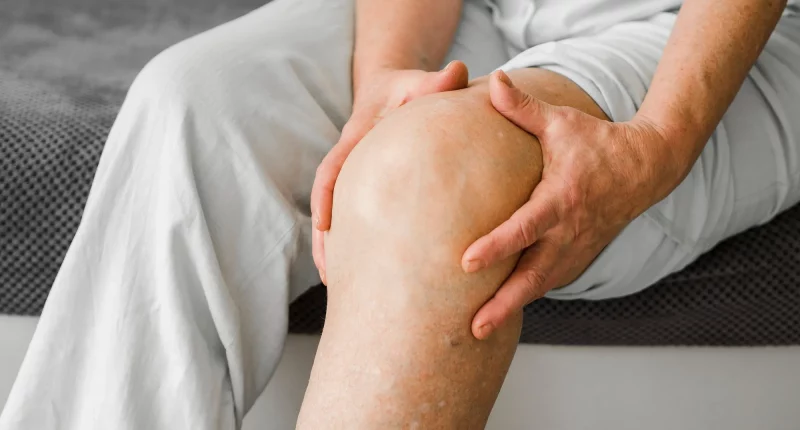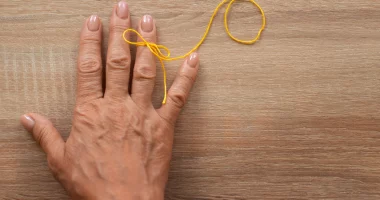Calcium pyrophosphate deposition disease is also termed Pseudogout. In short form, it is termed as CPPD. It happens when calcium pyrophosphate crystals accumulate in the joints and nearby tissues. This buildup can lead to symptoms similar to gout, another kind of arthritis. However, gout is caused by a different type of crystal, so healthcare professionals may need to test to determine the specific crystals present and correctly diagnose the condition.
While there is currently no permanent healing for CPPD, various treatments can help manage the symptoms. Additionally, individuals with CPPD can take steps at home to alleviate discomfort and maintain joint function.
What is it?
Pseudogout is a kind of arthritis that can cause sudden and painful flare-ups. It happens when calcium pyrophosphate crystals accumulate in the joints and surrounding tissues. These crystals can trigger symptoms similar to gout, another type of arthritis, but gout is caused by a different type of crystal.
According to the Arthritis Foundation, the likelihood of developing CPPD increases with age. Nearly 50% of individuals over the age of 85 have these crystals, but not everyone experiences symptoms. Without proper treatment, CPPD can cause severe pain, recurrent attacks, and chronic inflammation, potentially leading to joint damage and long-term disability.
While there is no treatment available to eliminate the crystals, medications can help manage the symptoms and reduce pain and inflammation.
Symptoms
Calcium pyrophosphate deposition disease can cause symptoms that appear suddenly and may last for several days or weeks. These symptoms can also appear and go unpredictably. While CPPD most commonly affects the knees, it can also impact other joints, such as the wrists, shoulders hands, elbows, and ankles.
During a flare-up, a person may experience a range of symptoms, including joint swelling, pain, stiffness, and sometimes fever. The affected joint may feel warm when touched.
If CPPD becomes a chronic condition, it can lead to persistent inflammation and joint damage. This can result in continuous stiffness, joint pain, and reduced joint function. Additionally, symptoms such as stiffness and extreme tiredness upon waking, as well as persistent inflammation at the joint, may become more pronounced. These symptoms can resemble those of rheumatoid arthritis and osteoarthritis.
Causes and Risk Factors
The exact cause of calcium pyrophosphate deposition disease is not well understood. However, age is a significant risk factor, as the likelihood of developing CPPD increases with age. According to the American College of Rheumatology, CPPD affects about 3% of individuals in their 60s and nearly half of the people in their 90s.
While CPPD can occur at any age, it is most commonly seen in males over the age of 60, as noted by the American Society for Surgery of the Hand.
Certain factors may increase the risk of developing CPPD. These include having a family history of the condition, having kidney failure, thyroid disorders, calcium metabolism disorders, or iron metabolism disorders. Additionally, CPPD can sometimes develop in joints due to an injury or surgery.
Medical Treatment
To manage the swelling and pain associated with calcium pyrophosphate deposition disease, healthcare providers may prescribe anti-inflammatory medications. In some cases, they might suggest corticosteroid injections or small doses of colchicine to assist in preventing future flare-ups.
For individuals with more severe cases of CPPD, several medical treatments are available to decrease swelling and alleviate symptoms. These treatments include methotrexate, hydroxychloroquine, and anakinra.
If these medications are not effective, surgical options may be considered. Surgery might involve replacing or repairing the damaged joint or improving joint function and relieving symptoms.
Diagnosis
Diagnosing calcium pyrophosphate deposition disease can be challenging because its symptoms are the same as gout and other kinds of arthritis. According to the American College of Rheumatology, differentiating between these conditions is often difficult.
If a healthcare provider suspects pseudogout, they will typically begin by enquiring about the patient’s symptoms, such as when they started and how long they have lasted. They will also inquire about the individual’s family and medical history to identify any potential risk factors.
To confirm the diagnosis, imaging techniques like ultrasound, X-rays, CT, or MRI scans may be used to examine the affected joint. Additionally, the healthcare provider may use a needle to extract a small amount of fluid from the joint. This fluid is then analyzed in a laboratory to check for the existence of calcium pyrophosphate crystals, which would confirm the diagnosis of CPPD.
Outlook
Although there is no cure for calcium pyrophosphate deposition disease, the condition can be managed with medicines and lifestyle changes. These strategies can help alleviate symptoms and improve quality of life.
However, CPPD can progressively cause damage to the joints due to the buildup of calcium pyrophosphate crystals. This damage may worsen over time, potentially leading to joint deterioration and, in some cases, disability. It’s important for individuals with CPPD to work closely with their healthcare providers to manage symptoms and monitor joint health.
Summary
Calcium pyrophosphate deposition disease, also termed pseudogout, is a form of arthritis caused by the buildup of calcium pyrophosphate crystals in joints. Symptoms include sudden joint pain, swelling, and stiffness, often resembling gout.
Although more common in older adults, CPPD can occur at any age and may lead to chronic joint damage and disability. Diagnosing CPPD can be challenging due to its similarity to other types of arthritis. While there is no cure, medications, and lifestyle adjustments can help manage symptoms. Early treatment is crucial to prevent severe joint damage and maintain mobility.









